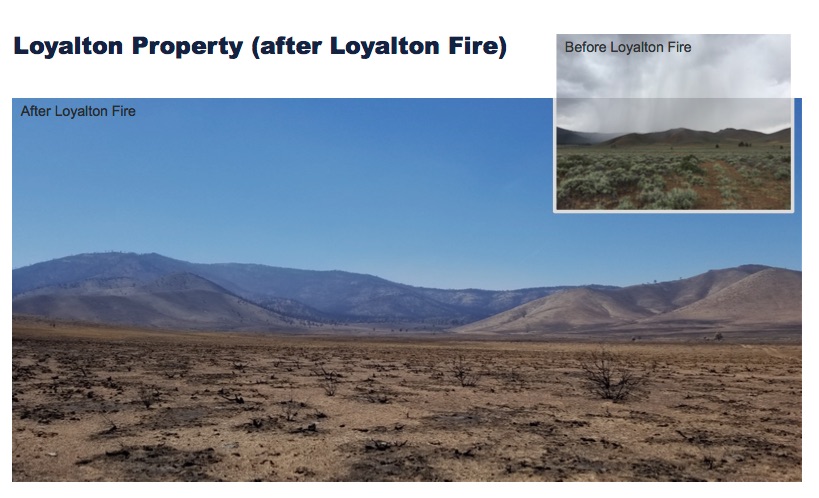It shouldn’t take years to decide to get rid of a money-losing “asset” lacking any prospect of recovery or improvement.
Yet, for 44 years Santa Clara has held on to 10,000 acres close to the town of Loyalton that were initially thought to have promise for steam — geothermal — electric generation, but quickly proved to have no economic value, and cost more to maintain than the City can get for grazing rights, the land’s only use.
For decades, there wasn’t any discussion of unloading this unprofitable asset. But when Silicon Valley Power declared its surplus in 2017, Mayor Lisa Gillmor has doggedly opposed a sale.
Council Member Suds Jain put Loyalton back on the calendar at the Jan. 26 meeting, saying, “It’s just a weight hanging on us. We can use that money for better uses, like possibly a community solar project.”
So far the discussion hasn’t happened. For the second time in as many weeks, Tuesday night the Santa Clara City Council postponed a discussion about selling the Loyalton land. It’s now tentatively on the agenda for April 6.
Located in a remote area near the Nevada border, the parcel is worth about $4 million, according to a 2020 appraisal — about 60 percent of the $1.6 million Santa Clara paid for it in 1977 converted to 2018 dollars.
Property tax is roughly $18,000, slightly less than what the City receives for grazing rights. Santa Clara also must pay for insurance and staff time to manage the property, adding up to decades of losses.
So how did the City end up with such a disappointing asset?
The story starts in the 1970s when Santa Clara began actively expanding its electricity generation portfolio; a policy established by then-Mayor Gary Gillmor — father of the current Mayor Lisa Gillmor — and legendary City Manager Don Von Raesfeld.
In 1977 Santa Clara was offered a property called Trosi Ranch that sat close by steam resources. Gary Gillmor, no longer Mayor, brought the proposed deal to the City Council. (The senior Gillmor founded Gillmor Real Estate, now run by Lisa).
The City commissioned a study of generation potential. The answer came back: maybe yes, maybe no.
“Temperatures are not sufficient for electrical power generation, but the data is not conclusive,” said Aeronomics Inc.’s geological review. “No immediate hot springs activity was seen on the property… It is concluded that geothermal activity indications exist on or near the Trosi property and further work is recommended to define their commercial potential.”
The City Council unanimously approved purchasing the land with electric utility funds and began leasing it for grazing. Subsequent geological studies found no geothermal features on the property. Other uses — quarrying, solar and wind power, a ski resort and a pheasant farm — were considered but didn’t show any potential profitability.
In 2017, SVP designated the Loyalton acres as surplus and recommended selling it.
City staff proposed hiring a realtor to sell the land for $10 million, although there was no appraisal. There was no possibility of any development, said then City Manager Rajeev Batra at the time, “at this point, it’s a liability.” The staff report recommended selling the property within the year.
When this came to the City Council, Mayor Lisa Gillmor said that she never heard anything about this and the proposal was remanded to the staff for further information. The City signed another grazing agreement in 2019, initially for $42,000 and then reduced to $20,000 in an unexplained consent calendar vote.
The Loyalton land didn’t come up again at the City Council until June 2020. This time Santa Clara got an appraisal of the property that valued it at $4.1 million.
The property has little potential for any kind of development, said the appraisal.
“With a decreasing population [769 and declining], aging workforce and limited local training options, the pool of workers in this area is quite small and talent attraction is difficult due to lack of housing availability…there is not much to attract tourism… The outlook is for a market softening.”
This wasn’t a welcome message at the Santa Clara Council and then-Council Member Debi Davis moved to table the discussion to a “future date,” saying, “Cows are grazing and the cows would be happy.”
Then it burned in the August 2020 wildfires, amplifying Santa Clara’s costs and liability.
The leaseholder is asking for reduced rent. The City is on the hook for $40,000 in surveys of damage and repair estimates — all of the fencing burned — and hundreds of thousands to replace the fencing. With no fencing, Santa Clara faces a big liability exposure if anyone is injured on the land.
However, Mayor Lisa Gillmor wasn’t convinced that it was time to cut the City’s losses.
“This is 40,000 [sic] acres and in 2017, our valley was [worth] between 10 and 13 million dollars,” she said on Jan. 26, “so it would be a fire sale if we sold it now and we have a policy of not selling properties.
“We…make our real estate work for us,” she continued. “If this comes back, I would like… information as to whether or not this is the best time to sell property, where we get our maximum value for it and also our policy on selling property.”
Councilmember Jain says the City has all the information it needs for a decision.
“This is land that I doubt any Council Member has ever set foot on,” he said. “If this was in the City, there is no way I’d sell it. If there was any prospect of residents being able to use it, I wouldn’t sell it. But as it is, this is a total liability. It should be a no-brainer.”
Note on Sources: Loyalton documentation can be found in the agenda report for the March 23, 2021 Council meeting and public records request number 21-144.
